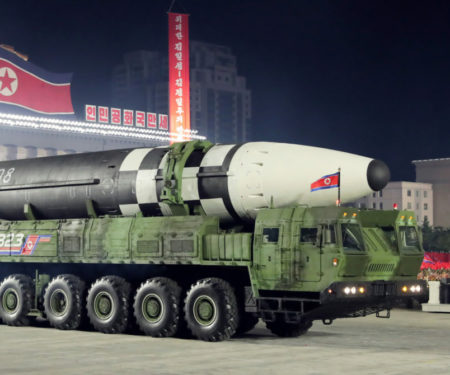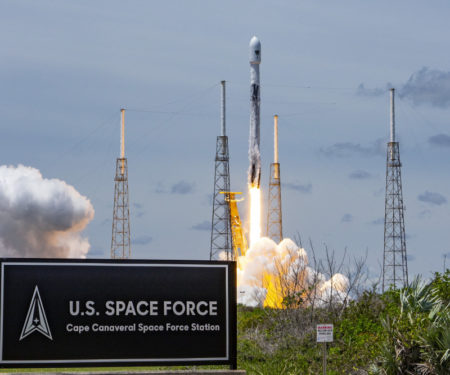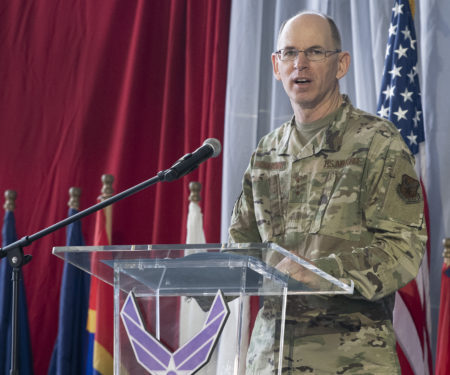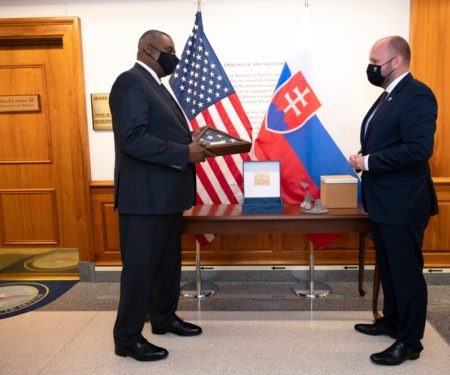Radar Sweep
How Russia's Invasion of Ukraine Is Shaping China's Plans for Taiwan
As Washington grapples with the fallout from Russia's invasion of Ukraine, lawmakers and officials are also wrestling with what the war means for a different territory eyed by a U.S. rival half a world away. In several congressional hearings this week, lawmakers pressed U.S. military leaders and intelligence officials to dissect how the war in Ukraine might be affecting China's thinking on invading Taiwan.
Time for NATO to Find a Way Out of the Escalation Trap in Ukraine
"In the battle for Ukraine, NATO’s strategy has been a careful balancing of its defensive mission, its credibility and the need to avoid escalation. The last of these has proved dominant: NATO is currently unable to use force, even for humanitarian purposes, for fear of an escalatory response from Vladimir Putin. Against that, NATO members have, greatly to their credit, shown unanimity, dramatically increased defence spending and sent generous and effective military aid to Ukraine. However, adhering to a policy of non-intervention for fear of escalation risks damaging NATO’s credibility and undermining the value of what it has already done. In the long term, it also risks impairing NATO’s ability to defend itself. Is there a way out of this ‘escalation trap’?” writes John Raine, senior adviser for geopolitical due diligence at the International Institute for Strategic Studies.
Space Force Guardians Grow Exasperated Waiting for the Branch's Policies to Slowly Emerge
In the summer of 2020, Space Force unveiled the motto it wanted all of its future Guardians to embody: Semper Supra, a Latin phrase that translates to “Always Above.” But in the two years since former President Donald J. Trump signed off on the creation of the new service branch, a lot of policies and procedures still need to be established, from finalizing the official uniforms to creating Space Force's physical training standards. Frustrated Guardians who are patiently awaiting these regulations and policies have coined their own Space Force motto online to cope: “Semper Soon.”
Is China Using Snap Military Drills to Conceal an Aircraft Recovery Effort?
Taiwan has said a Chinese military plane crashed into the South China Sea in early March, with Beijing appearing to hide its rescue and recovery effort under the guise of a snap military drill. This claim echoes that of Vietnamese open-source investigator Duan Dang, who said his sources told him a Shaanxi Y-8 maritime patrol aircraft of the People’s Liberation Army crashed into waters south of the Hainan Island on March 1.
OPINION: China is Incentivizing R&D Investment. Why is America Going in the Opposite Direction?
“At a time when U.S. defense leaders are tackling Russia’s current invasion of Ukraine, while stressing the need to invest in order to stay ahead of the growing competitive threat from China, policymakers have handcuffed innovation with a new tax policy that threatens to stifle vitally needed research and development (R&D) funding,” writes Eric Fanning, former acting Air Force Secretary and current head of the Aerospace Industries Association.
Why the US Won’t Give Patriot Interceptors to Ukraine
Pentagon officials will not send the advanced Patriot air-defense system to Ukraine, saying March 10 that U.S. forces would need to enter Ukraine to operate it, which is a non-starter for the Biden administration. The decision comes one day after U.S. officials rejected a proposal from Poland to have the United States and NATO transfer Polish MiG-29 fighter jets to Ukraine.
OPINION: Want a No-Fly Zone? You Need a Modern Air Force First
“Several leaders in the United States and Europe have suggested supporting Ukrainian President Volodymyr Zelensky’s plea for a no-fly zone over Ukraine. However, for a no-fly zone to be effective, U.S. and NATO nations must be willing to shoot down Russian aircraft. Top officials are reluctant to cross that line against a nuclear-armed peer adversary. Even if they did choose to pursue this action, they’d struggle to implement it given the dearth of modern fighters,” writes Douglas Birkey, the executive director of the Air Force Association’s Mitchell Institute for Aerospace Studies.
Ukraine War Could Put Food Security on Pentagon’s Plate
Ukraine banned the export of wheat and other vital food commodities, triggering global fears for the food security of millions of people this year. Now the Pentagon has been urged to study how the disrupted food supply driven by Russia’s invasion of Ukraine will impact security around the world.
Top American Generals on Three Key Lessons Learned from Ukraine
It’s been two weeks since Russia began its invasion of Ukraine, and a conflict that some expected to be over in days appears to be stretching into a bloody and protracted war. While President Joe Biden has repeatedly stated that the U.S. military will not get involved, senior U.S. defense officials and military leaders have been closely watching the conflict to better comprehend the risk to NATO allies—and to understand how the nature of warfare may be changing. And thanks to a series of public hearings and events, some of those assessments have entered the public sphere.
Pakistan Has Taken Delivery of Its First Chinese-Made J-10 Fighters
Pakistan’s first Chinese-made J-10 multirole fighter jets have touched down in the country to launch the type’s initial operations with its debut export customer. While unofficial photos of at least two J-10s in Pakistan Air Force markings began to appear on social media last month, the service’s official induction today was a much glitzier affair and also revealed apparent plans for other new types to be procured for the service, including Turkish-made armed drones.
Senate Rejects Bid to Block $2B Sale of Military Planes to Egypt
The Senate on March 10 beat back an effort to cancel a $2 billion deal to sell military cargo planes to Egypt over the country’s human rights record. The vote was a whopping 81-18 against advancing a resolution offered by Sen. Rand Paul (R-Ky.) to disapprove the sale. Paul’s legislation would have terminated a $2.2 billion sale of a dozen C-130J cargo planes, engines, and related equipment.
PODCAST: Ukraine and the Broader Implications
In episode 67 of the Aerospace Advantage podcast, “Ukraine and the Broader Implications: The Rendezvous,” host John “Slick” Baum engages with Mark Gunzinger, Heather Penney, Douglas Birkey, Lukas Autenried, and Dan Rice of the Mitchell Institute team to better understand recent events surrounding Russia’s invasion of Ukraine. The conversation covers a number of key topics, including why deterrence failed to dissuade Putin, balancing force requirements between Europe and the Pacific, implications for space, and China’s take on the conflict thus far. We also dig into issues such as no-fly zones, MiG-29 transfers, the performance of the Russian force, and what all of this should mean for the fiscal 2023 budget.
Air Force Investigating Unnamed Drone Safety ‘Incident’ at Creech
An unnamed military drone was involved in a safety “incident” the morning of March 9 at Creech Air Force Base, Nevada, the service confirmed. The remotely piloted aircraft is assigned to Creech’s 432nd Wing, said wing spokesperson Capt. Stephen Collier. No one was hurt in the incident, which occurred shortly before 8 a.m. local time.
DOD Space Agency Funds Development of Laser Terminal that Connects to Multiple Satellites at Once
Each of the satellites in the Pentagon’s planned mesh network of communications satellites could have as many as four laser links so they can talk to other satellites, airplanes, ships and ground stations. Optical inter-satellite links are critical to the success of the Space Development Agency’s low Earth orbit constellation—known as Transport Layer—that will be used to route data traffic. Lasers provide much higher transmission data rates than traditional radio-frequency communications but are also far more expensive.
How an Air Force A-10 Pilot Pulled Off a Miracle Landing With Much of Her Tail Shot Off
One of the late legendary Air Force pilot Chuck Yeager’s most famous quotes is “If you can walk away from a landing, it’s a good landing. If you can use the airplane the next day, it’s an outstanding landing.” Retired Air Force Col. Kim “Killer Chick” Campbell seemed to find new meaning for the phrase on April 7, 2003, when she touched down at Ahmad Al-Jaber Air Base, Kuwait, roughly an hour after much of the tail of her A-10 Warthog attack plane was shredded by a surface-to-air missile that hit while she and her flight lead, Lt. Col. Rick “Bino” Turner, were providing close air support for U.S. troops fighting in downtown Baghdad.




